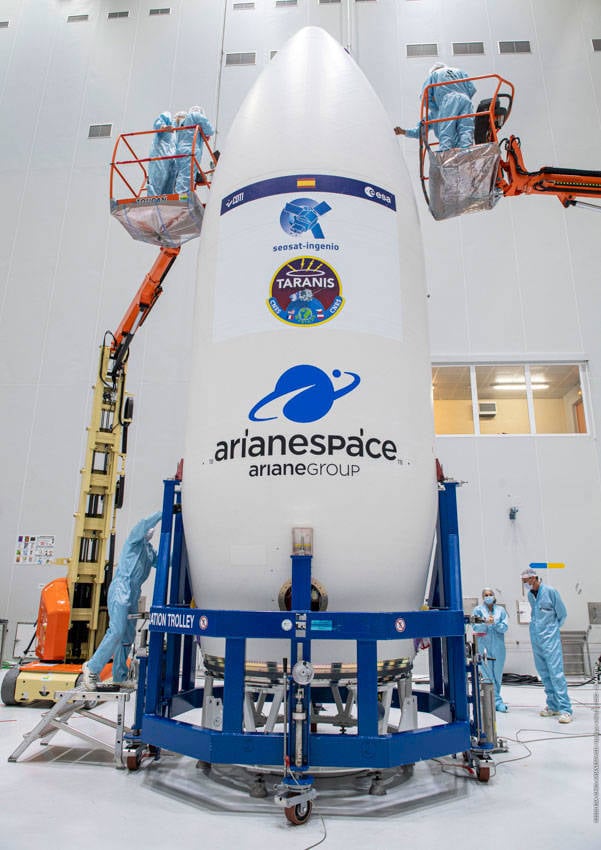This article is more than 1 year old
Dodgy procedures doomed Arianespace's Vega before it even left the launchpad
Misleading processes and inadequate testing caused an inversion of steering, officer
ESA has published its report into the loss of the Vega VV17 mission and said the screwup was due to an "inversion of electrical connections" during integration.
Which, frankly, sounds a lot like someone plugged something in the wrong way round.
The rocket blasted off on schedule at 01:52 UTC on 17 November from the French Guiana spaceport, carrying a pair of European-built satellites: Spain’s SEOSAT-Ingenio and France's TARANIS. All went well for the first eight minutes until the AVUM upper stage was ignited. "At that time, a degraded trajectory was detected, followed by a loss of control of the vehicle and the subsequent loss of the mission," according to Arianespace at the time.
Suspicion fell on the integration of the fourth-stage AVUM Thrust Vector Control (TVC) system.

Vega’s dual-satellite payload being encapsulated in the payload fairing for flight VV17 back in November Pic: Arianespace
An Independent Enquiry Commission (IEC) set up by ESA and Arianespace has found that, yep, it was the TVC wot dunnit and no, the design itself wasn't to blame. Instead, it was that "inversion of electrical connections" during integration that inverted TVC steering commands and, as the report delicately put it, caused a "trajectory degradation."
The sequence of events makes for grim reading. The integration procedure was "misleading" and the resulting incorrect routing and connection of the control lanes was not picked up in testing.
It was only the second Vega launch since 2019's failure and the 17th overall. While the earlier failure was a design flaw, managers are doubtless relieved that the recommendations this time around involve some additional inspections of existing hardware and changes to the manufacturing, integration and acceptance processes on Vega assembly lines in Italy and its final acceptance in French Guiana.
The Vega had a busy 2021 planned, and the next launch was scheduled for the first quarter. Stéphane Israël, CEO of Arianespace, praised the clarity of the report's conclusions and said: "It may allow a return to flight by end Q1 2021, in full confidence to Vega's quality and competitiveness on the market."
Still, Arianespace is in good company. One can't help but remember 2013's Russian Proton-M mishap, reportedly the result of an engineer slotting in a critical component the wrong way around. ®
